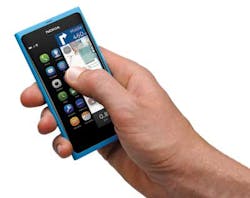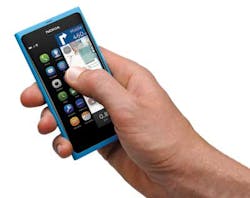Cell-phone imaging system helps visually impaired navigate
A researcher at theSmith-Kettlewell Eye Research Institute (San Francisco, CA, USA) plans to develop and evaluate a cell-phone-based system to enable visually impaired individuals to navigate using street signs.
Employing the built-in camera and computing power of a standard cell phone, the system will process images captured by the user to find and analyze signs and then speak their contents. This will provide valuable assistance for visually impaired pedestrians in finding and reading street signs, as well as locating and identifying addresses and store names, without requiring them to carry any special-purpose hardware.
The sign finding and reading software will be made freely available for download into any camera-equipped cell phone that uses the widespread Symbian operating system (such as the popular Nokia cell phone series).
Led by James Coughlin, the researchers will develop, refine, and transfer a new belief propagation-basedalgorithm to the cell phone platform that has already been successful in finding and analyzing signs under difficult real-world conditions including partial shadow coverage.
Human factors studies will help to determine how to configure the system and its user controls for maximum effectiveness and ease of use, and provide an evaluation of the effectiveness of the overall system.
The researchers claim that the research will result in a highly accessible system (with zero or minimal cost to users), which could improve independent travel for visually impaired persons and perhaps, eventually, those who are completely blind.

